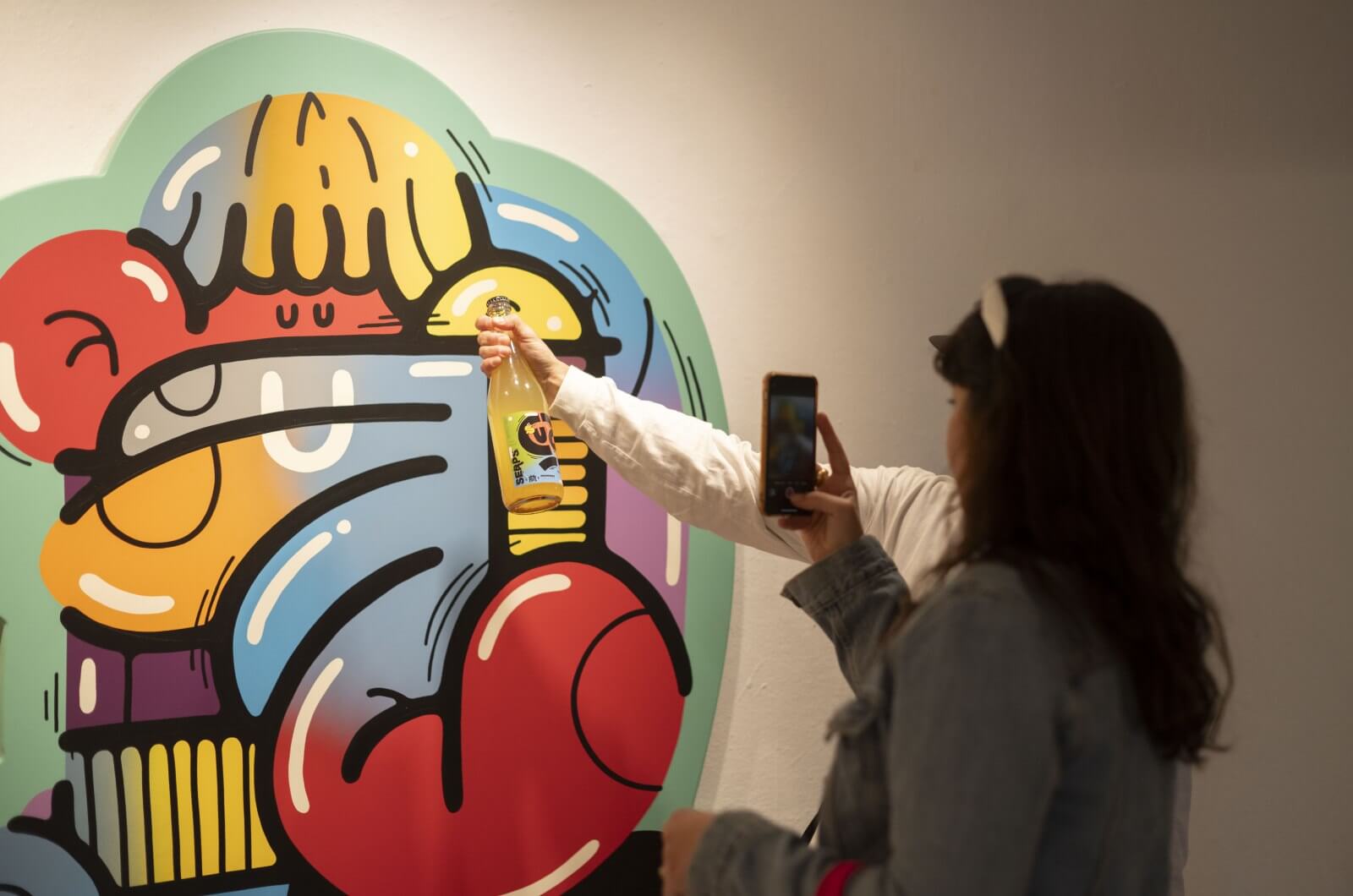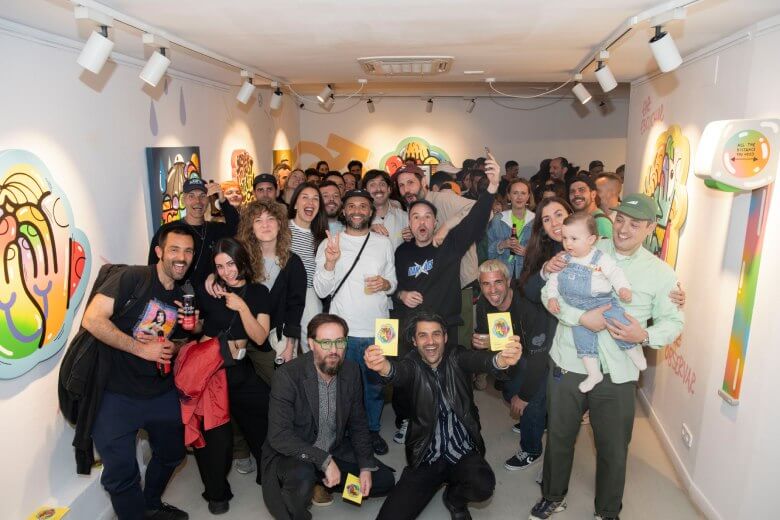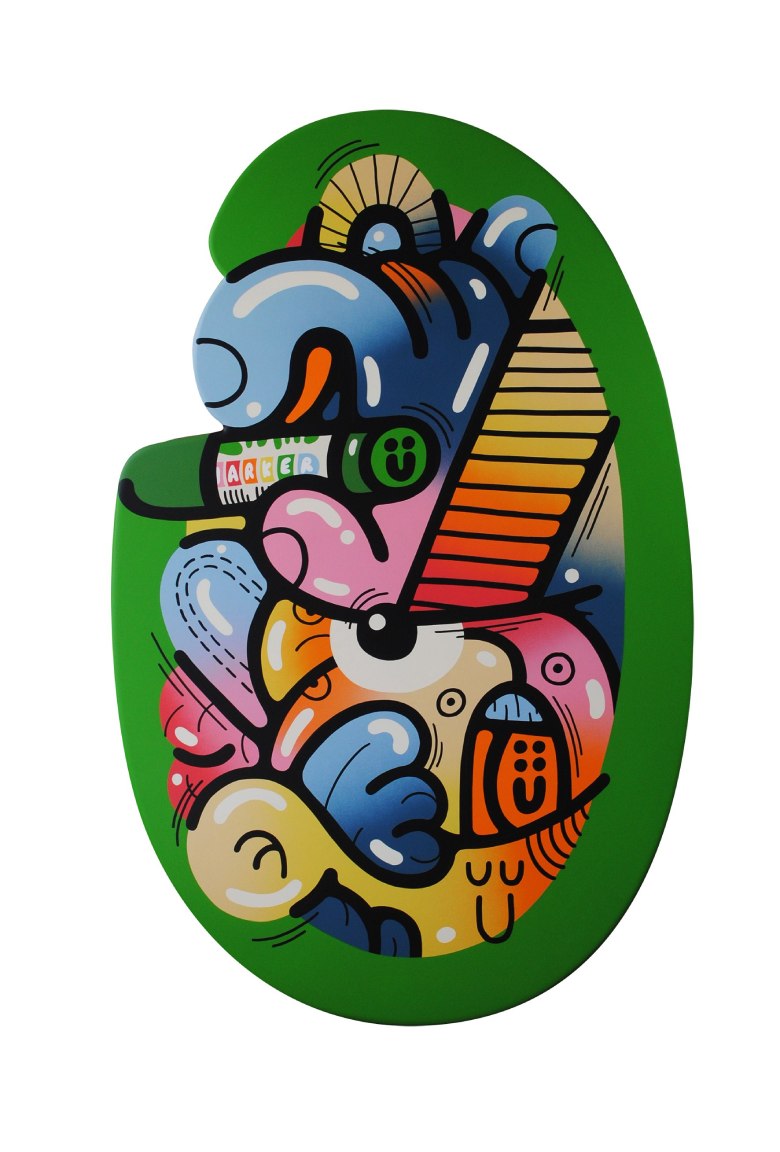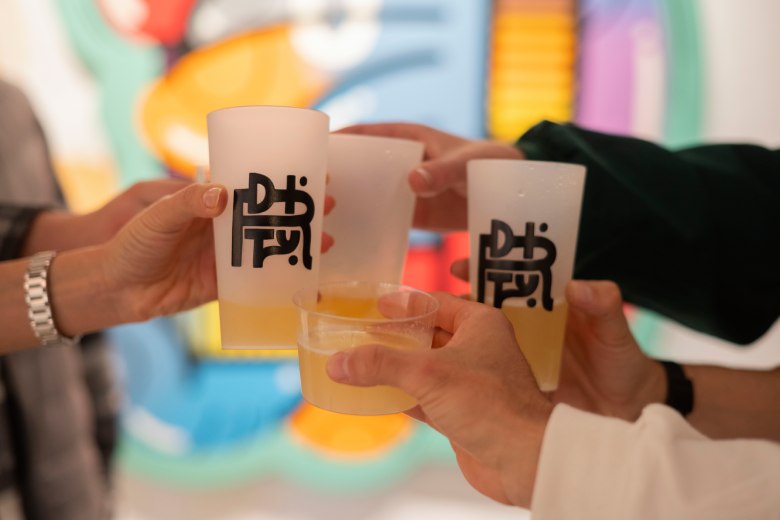
“It’s a small world.” Or “Describe your corner of the globe and you describe the whole world.” We have heard such phrases many times and this article fulfills these two maxims. This month at Montana Gallery Barcelona you can catch an exhibit with work from the artist, Dirty, from L’Hospitalet de Llobregat. As our mission is to make our corner known – as we try to expand it – we leave you with a brief interview to get to know a little better the background, the concerns, and the message of some of the paintings that you can see until June 14 at Montana Gallery Barcelona.
“Design and illustration have or usually have a “more functional” role and in the end you are doing what the client asks for. I need to feel free when I create. For me, art means connecting with yourself, communicating feelings, connecting with the viewer and creating a bond.”
When did you discover your vocation?
I’ve been painting since I was a child. I think it’s because it was the first time I was told that I was doing something well. It was in kindergarten. I must have been 4 or 5 years old and it was like an exercise to paint a drawing. It was like a vase. When I got home I got a lot of compliments so I guess that made me very confident in my drawing ability from my childhood onwards.

And when did you decide to make it your way of life?
I decided to dedicate myself to art because it’s what really fulfills me at different levels. Design and illustration have or usually have a “more functional” role and in the end you are doing what the client asks for. I need to feel free when I create. For me, art means connecting with yourself, communicating feelings, connecting with the viewer and creating a bond. Graphic design gave me a lot of economic stability but it didn’t give me happiness. Today I don’t have economic stability like before, but I am much happier and more connected with myself and my surroundings. And the most important thing: I won’t be left with the doubt of what would have happened if Javi hadn’t taken the risk.

Can you explain some of the works?
I am giving some guided visits to my exhibition and in them I go into the meaning of my work and why I paint what I paint and how I paint it. During these visits I make much more detailed descriptions of each piece, but here I will summarise a bit.
“…there is nothing braver than showing vulnerability.”

For example, the work entitled “Cuando lloro” (When I Cry) talks about nothing more and nothing less than just that. I have always had the need to cover my face when I cried and when I did not want anyone to see me cry. It was a way of protecting myself and to not show my vulnerability. Nowadays I have stopped doing it, because there is nothing braver than showing vulnerability.

In “Límites”, for example, I talk about the importance of setting limits and how that ultimately builds wellbeing with oneself and one’s surroundings. The felt-tip pen is an element that draws a line that represents this idea of limits; that is why I also represent it isolated in the work Marker. Undoubtedly, a marker is a great tool.

“Locked represents a key tied with its own padlock so that it cannot be opened and therefore cannot be released. Many times we lock ourselves in and then have a hard time opening up again.”

Marker is part of a set of four pieces that are smaller than the rest. Among them we find Signs, which talks about scars and how they make us who we are. It is normal to protect ourselves; we do not want to be hurt, but we should not be obsessed with excessive protection, since “the knocks are what make us learn and grow as individuals.
Locked represents a key tied with its own padlock so that it cannot be opened and therefore cannot be released. Many times we lock ourselves in and then have a hard time opening up again.
The fourth element of this set is called Attention and is the simple representation of an eye. Attention is also something that can help us to protect ourselves, and in my iconography the eye takes on exceptional value, since all the representations of faces that I draw appear with closed eyes.

2 What do you think?
Add a comment